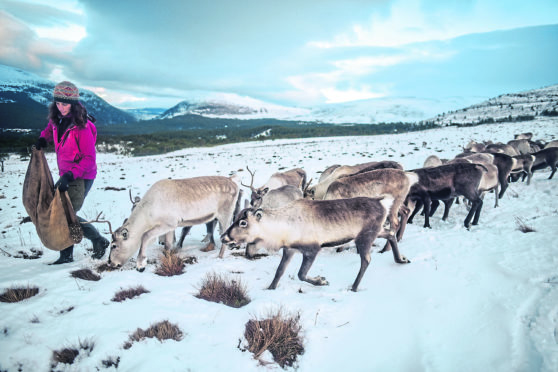Looking out for reindeer is usually reserved for children on Christmas Eve, but now researchers at the University of the Highlands and Islands are doing the very same.
They are using cutting-edge GPS camera collars to find out more about the whereabouts and behaviour of the reindeer in the Cairngorms.
The study forms part of a new research programme designed to inform future sustainable reindeer tourism in the Cairngorms National Park.
Inverness College UHI is leading on the Cairngorms Reindeer Research Programme. It is a partnership with the Cairngorm Reindeer Herd, the Cairngorms National Park Authority, the Royal Botanic Garden Edinburgh, Highlands and Islands Enterprise, the Royal Society for the Protection of Birds, Scottish Natural Heritage and Forest Enterprise Scotland.
The research programme is investigating the ecological role reindeer play in the Cairngorms, focussing on their movements, behaviour and diet, as well as investigating what attitudes and values people hold about the reindeer.
Dr Louise de Raad, Inverness College UHI research fellow and principal investigator on the programme, said: “The Cairngorms National Park contains some of the finest forests and mountain habitats in Britain and landowners are seeking to maximise the restoration and expansion of these areas.
“We know the reindeer are a key visitor attraction, but despite being present for more than 60 years we know very little about their impact on the area.
“Studying their feeding and ranging behaviour will be a first step towards understanding their impact and this will help us make recommendations to ensure that the herd is managed sustainably and continues to make a positive contribution to the area.”
GPS collars equipped with cameras and accelerometer technology have been tested on two reindeer, providing video footage of the animals and data on their movements and behaviour.
In April tracking and dietary study will be extended to include more reindeer and a larger area of the Cairngorms National Park.
The research will lead to recommendations to enable sustainable reindeer management and the continued protection of designated areas in the Cairngorms National Park.
